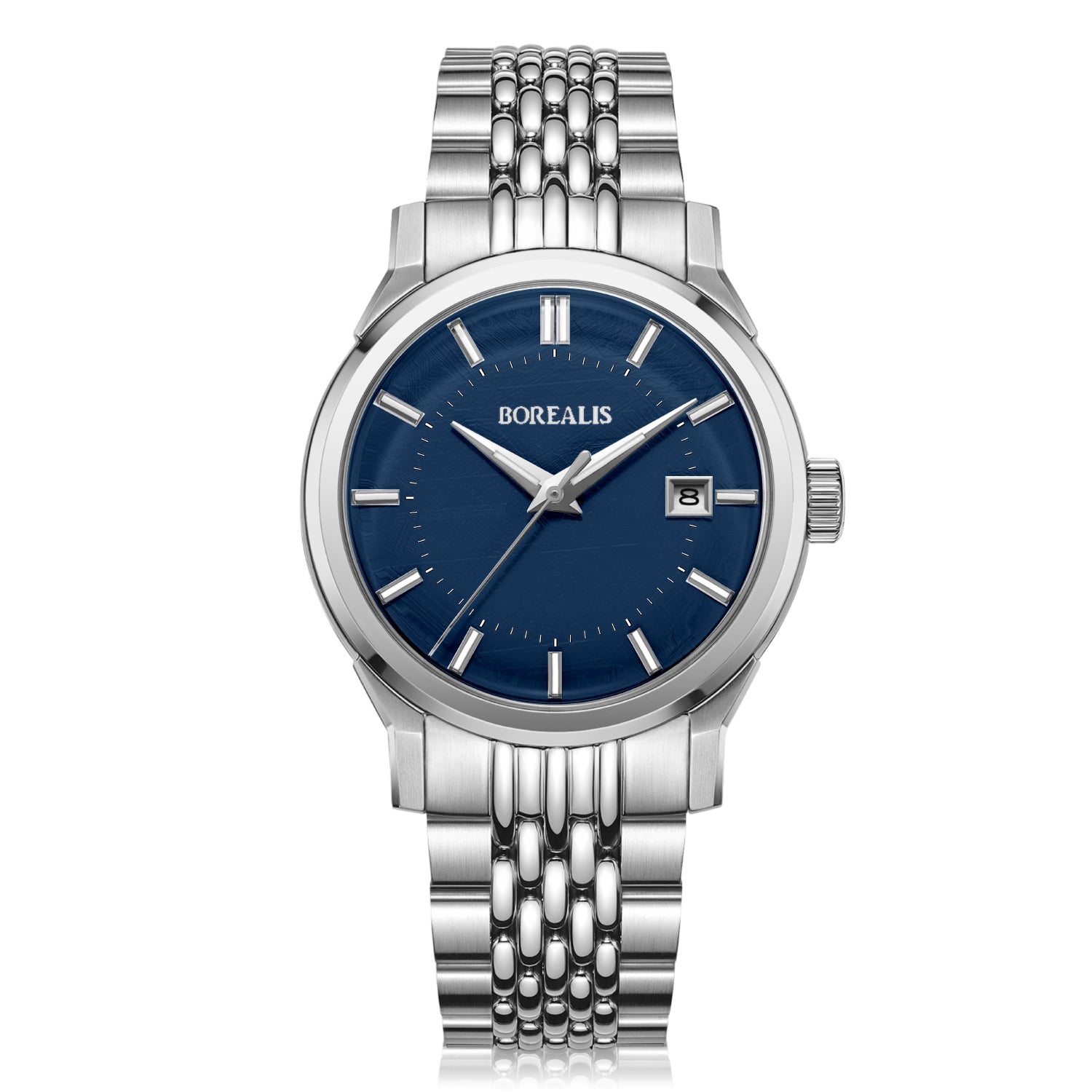The world of horology is home to some truly remarkable creations, and the Miyota 9 series stands out as an exemplar of Japanese craftsmanship. This range of movements, produced by Miyota, is celebrated for its technical prowess, unique characteristics, and impressive performance in comparison to Swiss and other Japanese movements and is used vastly by microbrand watch companies such as the microbrands Borealis Watch Company and Prometheus Watch Company.
Technical Specifications of the Miyota 9 Series
The Miyota 9 series is a diverse collection of automatic movements, including the 9015, 9019, 9039, 9075, 9029, 90S5, 9100, 9120, and 9122 models. These movements share some impressive technical specifications, with an accuracy ranging between -10 to +30 seconds per day. The movements are also known for their thinness, measuring in at 3.9mm, which allows for innovative and flexible watch designs. All of the movements in the series feature automatic and hand winding, a stop-second device, and a posture difference of under 30 seconds.
Certain models offer specific features. For instance, the 9015, a three-handed automatic movement, comes with a date complication. Its counterpart, the 9019, has similar features but with lower hands clearance to maximize its thinness.
The 90S5, another variant, can be used as an open-heart movement, revealing the intricate mechanics through a small window on the dial. The 9039 and 9029 are no-date variants, with the latter being a two-handed movement.
Uniqueness of the Miyota 9 Series
The standout attribute of the Miyota 9 series is undoubtedly its ultra-thin design. The thinness of these movements, at only 3.9mm, provides watchmakers with considerable flexibility in design, allowing the creation of timepieces that exhibit distinct personalities. This feature enhances the watch's aesthetic appeal, resulting in a sleeker look and improved comfort in wearing. However, it's worth noting that this design requires a higher manufacturing cost.
Comparative Analysis: Miyota 9 Series vs. ETA 2824-2 and Seiko NH Series
When placed alongside Swiss and other Japanese movements, the Miyota 9 series exhibits some clear advantages. Compared to the ETA 2824-2, the Miyota 9 series is thinner (3.9mm vs. 4.6mm), which allows for more innovative watch designs. The series is also more reliable, with significantly lower failure rates, lending credence to its reputation for robustness.
| Feature | Miyota 9 Series | Seiko NH Series | Swiss ETA 2824-2 Series |
|---|---|---|---|
| Origin | Japan | Japan | Switzerland |
| Type | Automatic | Automatic | Automatic |
| Height (approximate) | 3.90mm | 5.32mm | 4.6mm |
| Accuracy (per day) | -10 to +30 seconds | Varies by model | -12 to +30 seconds |
| Functions | Varies by model | Varies by model | Hours, minutes, seconds, date |
| Beat Rate | 28,800 bph | 21,600 bph | 28,800 bph |
| Hand Winding | Yes | Yes | Yes |
| Date Setting | Available in some models | Available in some models | Yes |
| Additional Features |
Open-heart in some models GMT in some models |
Open-heart in some models GMT in some models |
None specified |
| General Reliability | High | High | High |
| Cost | More expensive than Seiko NH series | Less expensive than Miyota 9 series | Generally more expensive than both Seiko NH and Miyota 9 series |
The comparison with the Seiko NH series, including the Miyota 9075 GMT movement, also yields interesting observations. The Miyota 9 series is thinner than the Seiko NH series (3.9mm vs. 5.32mm), enabling a broader range of design possibilities. Moreover, it boasts a higher beat rate (28800 bph vs. 21600 bph), which results in a smoother sweep of the seconds hand and contributes to timekeeping accuracy.
Pros and Cons of the Miyota 9 Series Movements
The Miyota 9 series is, without a doubt, an impressive collection of movements. Its thinness, reliability, and high beat rate are all significant advantages that set it apart from competitors like the ETA 2824-2 and the Seiko NH series. Additionally, the series' diversity allows for a wide range of applications, from date complications to open-heart displays.
However, no movement is without its drawbacks. Some users have commented on the loudness of the Miyota 9 series' rotor, which could be a downside for those who prefer quieter watches. Also, the increased cost of manufacturing due to the thinness of the movement is a factor to consider.
Conclusion
As a final analysis,the Miyota 9 series is a testament to the innovation and precision of Japanese watchmaking. Its technical specifications, unique features, and standout performance in comparison to Swiss and other Japanese movements underline its position in the world of horology. Despite a few minor drawbacks, the series is a worthy consideration for any watch enthusiast or maker seeking robustness, refinement, and a remarkable level of thinness











